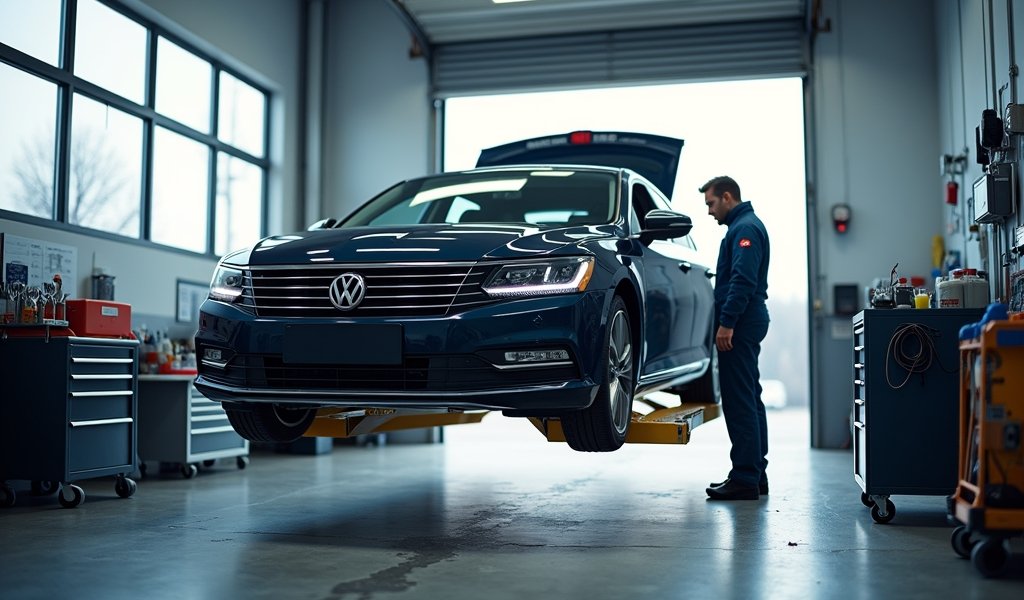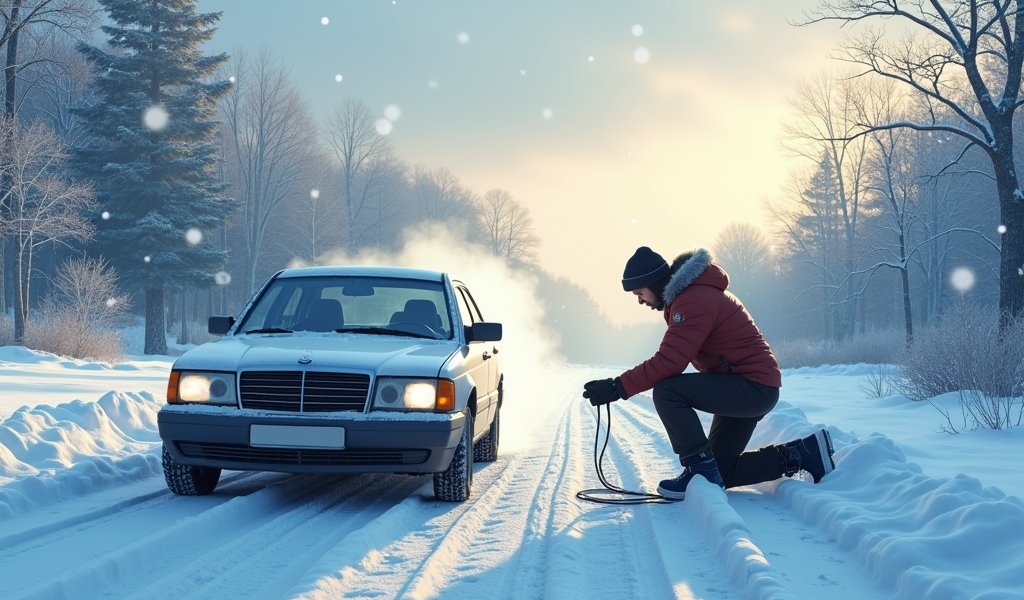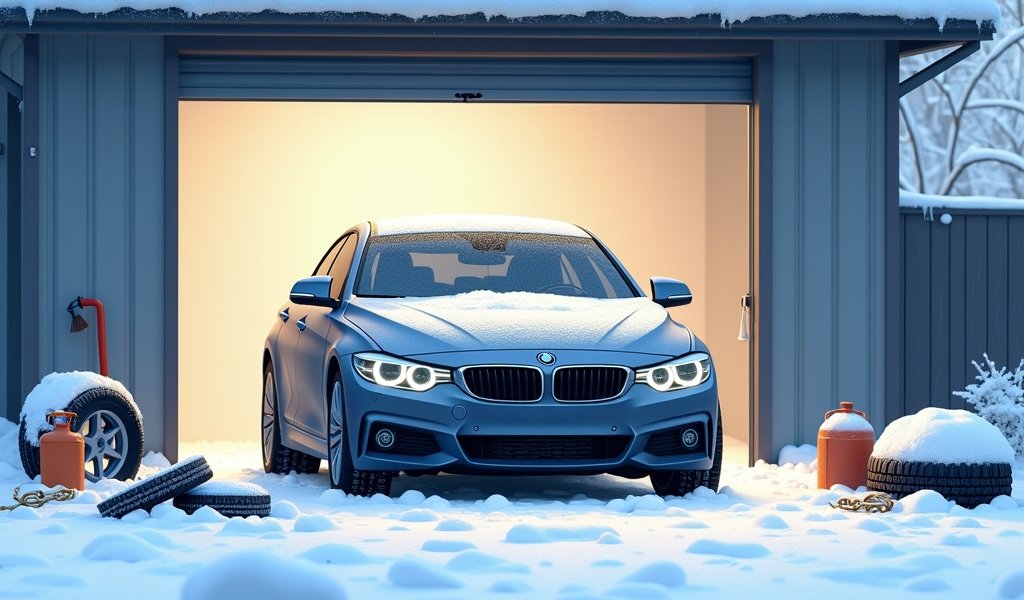Overview
This detailed guide provides essential winter vehicle maintenance tips including battery care, fluid checks, tire maintenance, emergency kit preparation, visibility system care, and seasonal storage guidance to ensure safety and reliability in cold weather. The article emphasizes how proactive winter maintenance prevents breakdowns, extends vehicle life, and protects drivers during challenging winter conditions.
Table of Contents
- Winter Car Care: The Complete Maintenance Checklist for Your Vehicle’s Well-being
- Why Winter Car Care Matters for Your Vehicle’s Health
- Battery Maintenance: Keeping Your Car’s Heart Healthy in Cold Weather
- Fluid Checks: Nourishing Your Vehicle Through Winter
- Tire Care: Supporting Your Vehicle’s Foundation in Snow and Ice
- Building a Winter Emergency Kit for Vehicle Safety
- Visibility Matters: Caring for Wipers and Lights
- Winter Storage: Protecting Seasonal Vehicles
- Conclusion: Embracing Proactive Winter Vehicle Care
- Frequently Asked Questions
Winter Car Care: The Complete Maintenance Checklist for Your Vehicle’s Well-being
When temperatures drop and snowflakes start falling, your vehicle needs extra care to maintain optimal health and performance. As a master technician with over 20 years of experience, I’ve seen firsthand how a comprehensive winter car maintenance checklist can make the difference between reliable transportation and being stranded in freezing conditions. Your vehicle’s well-being during the colder months isn’t just about convenience—it’s about safety for you and your loved ones.
Winter presents unique challenges for automobiles. The combination of frigid temperatures, road salt, and moisture creates a potentially damaging environment for vital components. Just as we prepare ourselves with warmer clothing and additional precautions, our vehicles deserve thoughtful preparation for the seasonal transition ahead.
In this guide, I’ll share professional insights on the seven essential maintenance tasks that will keep your vehicle running smoothly when the mercury drops. These aren’t just routine recommendations—they’re proven preventative care steps drawn from decades of professional experience and countless winter roadside rescues that could have been avoided.
Why Winter Car Care Matters for Your Vehicle’s Health
Winter’s harsh conditions create a perfect storm of stress factors for your vehicle. Cold starts put tremendous strain on your engine and battery. Ice and snow challenge your tires and braking system. Road salt accelerates corrosion on your undercarriage. All these factors combine to potentially reduce your vehicle’s lifespan if proper care isn’t taken.
According to AAA’s automotive research, calls for emergency roadside assistance spike dramatically during winter months, with battery failures being the number one culprit. This statistic highlights how preventable many winter breakdowns actually are with proper preparation.
Beyond avoiding inconvenient breakdowns, winter maintenance protects your financial well-being. Minor preventative care now can help you avoid costly major repairs later. Think of winter preparation as an investment in your vehicle’s longevity and your peace of mind during challenging driving conditions.

Battery Maintenance: Keeping Your Car’s Heart Healthy in Cold Weather
Your battery functions as your vehicle’s heart, and cold weather puts extraordinary demands on this vital component. Battery capacity can drop by up to 50% when temperatures fall below freezing, making winter mornings particularly challenging for marginal batteries. Proper car battery care in cold weather is essential for reliable starts and overall vehicle health.
Start by visually inspecting your battery connections. Look for:
- Clean, tight terminal connections (free of corrosion)
- Secure battery mounting
- No visible cracks or bulges in the battery case
- Proper fluid level (if it’s not a sealed unit)
For batteries over three years old, consider having a professional load test performed. This simple diagnostic check measures your battery’s ability to hold a charge and deliver the necessary cranking amps when you need them most. Many auto parts stores and service centers offer this test at no charge.
If your battery shows signs of weakness, replace it proactively rather than waiting for a failure. Nothing disrupts your morning routine like a no-start situation in freezing temperatures. As a preventative measure for vehicles that sit unused for extended periods, consider using a quality battery maintainer. These devices keep your battery at optimal charge without risking overcharging damage.
Fluid Checks: Nourishing Your Vehicle Through Winter
Think of your vehicle’s fluids as its lifeblood—each one performs a critical function in keeping systems operating properly, especially when temperatures plunge. Winter demands special attention to these vital fluids for optimal vehicle health and performance.
Antifreeze/Coolant
Your cooling system requires proper antifreeze concentration to prevent freezing, which could crack your engine block—a catastrophic and expensive failure. Check your coolant’s freeze protection level using an inexpensive tester from any auto parts store. The best antifreeze for winter driving should protect your system to at least -30°F in northern climates.
While checking levels, inspect the coolant’s condition. Discolored, rusty, or debris-filled coolant indicates it’s time for a cooling system flush. Most manufacturers recommend a coolant change every 2-5 years, so review your maintenance schedule to see if you’re due.
Oil Viscosity Considerations
Engine oil thickens significantly as temperatures drop, making it harder for your engine to turn over during cold starts. Consider switching to a winter-weight oil if you live in a region with sustained freezing temperatures. Your owner’s manual likely recommends specific winter viscosity ratings like 5W-30 instead of 10W-30 for cold climates.
If you’re approaching your scheduled oil change interval, complete it before winter sets in. Fresh oil with the proper winter viscosity helps ensure your engine receives immediate lubrication during those critical cold starts.
Brake Fluid Health
Brake fluid absorbs moisture over time, which can lead to decreased stopping power or even brake line freezing in extreme conditions. Check your brake fluid’s condition and level, particularly if it hasn’t been changed in the past two years. Dark, cloudy fluid indicates contamination and should be flushed and replaced for optimal braking performance on slippery winter roads.
Washer Fluid Preparation
Standard summer washer fluid will freeze and become useless (or worse, damage your reservoir) when temperatures drop below freezing. Replace it with winter-grade washer fluid rated for your region’s lowest expected temperatures. Consider carrying a spare container in your trunk for emergency refills during messy winter driving conditions.
Tire Care: Supporting Your Vehicle’s Foundation in Snow and Ice
Your tires provide the only contact points between your vehicle and the road, making them crucial for winter safety and vehicle well-being. Proper tire care becomes even more critical when roads are covered with snow, ice, or slush.
Tread Depth Assessment
While the legal minimum tread depth is 2/32″, winter driving demands more. For snow traction, experts recommend at least 6/32″ of tread depth. The simple quarter test offers a quick assessment—insert a quarter into your tire tread with Washington’s head pointing down. If his head is partially covered, you have at least 4/32″ of tread, which provides minimal winter traction.
Uneven tire wear indicates alignment or suspension issues that should be addressed before winter arrives. These problems not only accelerate tire wear but can compromise handling on slippery surfaces.
Winter Tire Considerations
If you live where winter brings regular snow and ice, consider investing in dedicated winter tires. According to Consumer Reports testing, winter tires provide up to 50% more traction than all-season tires in snow and ice conditions. The specialized rubber compounds remain flexible in cold temperatures, and unique tread patterns maximize grip on slippery surfaces.
For those who choose to stick with all-season tires, ensure they’re rated for mud and snow (look for the “M+S” marking on the sidewall). While not as effective as dedicated winter tires, these provide better winter performance than summer or performance tires.
Pressure Monitoring
Tire pressure drops approximately 1 PSI for every 10°F decrease in temperature. This natural pressure loss can lead to underinflated tires, which compromises handling, increases wear, and reduces fuel efficiency. Check tire pressure monthly throughout winter, preferably when tires are cold, and maintain the manufacturer’s recommended pressure levels.
Consider investing in a quality tire pressure gauge to keep in your glove compartment for regular checks. Digital gauges provide the most accurate readings and are worth the modest investment for consistent monitoring of your tire health.

Building a Winter Emergency Kit for Vehicle Safety
Even with perfect maintenance, winter driving presents unpredictable challenges that can leave you stranded. A thoughtfully assembled winter emergency kit demonstrates care for yourself and your passengers while providing peace of mind during the most challenging driving season.
Your winter emergency kit should include:
- Warm blankets or sleeping bags
- Extra warm clothing (hats, gloves, socks)
- High-energy, non-perishable snacks
- Bottled water (replace regularly to prevent freezing/bursting)
- First-aid supplies
- Flashlight with extra batteries
- Jumper cables or portable jump starter
- Small snow shovel and ice scraper
- Bag of sand, cat litter, or traction mats
- Warning triangles or flares
- Charged power bank for mobile devices
Store these items in a durable, waterproof container in your trunk or cargo area where they’ll be accessible in an emergency. Review and refresh the contents seasonally to ensure everything remains in good condition and ready for use.
For those who travel in remote areas or during extreme weather, consider adding advanced safety items like a compact emergency radio, chemical hand warmers, and a basic tool kit. The National Safety Council recommends notifying someone of your route and expected arrival time when traveling in severe winter conditions.
Visibility Matters: Caring for Wipers and Lights
Winter driving safety depends heavily on clear visibility, yet this aspect of winter car care is often overlooked. Reduced daylight hours, precipitation, and road spray create a perfect storm of visibility challenges that demand properly functioning wipers and lights.
Wiper Blade Health
Standard wiper blades typically last six months to a year, but winter conditions accelerate their deterioration. Inspect your wipers for signs of wear like cracking, stiffening, or uneven contact with the windshield. If your wipers streak, skip, or chatter across the glass, it’s time for replacement.
Consider upgrading to winter-specific wiper blades designed with a protective rubber boot that prevents ice and snow buildup. These specialized blades maintain better contact with your windshield during winter precipitation, providing clearer visibility when you need it most.
Lighting System Care
With shorter days and longer nights, your vehicle’s lighting system becomes even more critical during winter. Walk around your vehicle to check that all exterior lights are functioning properly, including:
- Headlights (both low and high beams)
- Fog lights (if equipped)
- Turn signals
- Brake lights
- Reverse lights
- License plate illumination
Clean your headlight lenses if they appear yellowed, hazy, or dirty. Oxidized headlights can reduce light output by up to 80%, severely compromising night visibility. Inexpensive headlight restoration kits can dramatically improve illumination without replacing the entire assembly.
Defrosting System Efficiency
Your vehicle’s defrosting system is a crucial visibility component during winter. Test both front and rear defrosters before cold weather arrives to ensure they’re operating at full capacity. A properly functioning climate control system not only improves visibility but also enhances overall driving comfort during winter months.
Consider applying a rain repellent treatment to your windshield for improved visibility during precipitation. These products create a hydrophobic surface that causes water to bead and roll off rather than obscuring your view.
Winter Storage: Protecting Seasonal Vehicles
For those with recreational or seasonal vehicles that hibernate during winter months, proper storage preparation preserves their well-being until spring arrives. Whether it’s a convertible, motorcycle, RV, or classic car, thoughtful winter storage prevents deterioration and ensures an easy return to service.
Cleaning and Protection
Begin with a thorough cleaning of exterior surfaces, including undercarriage areas where road salt and debris accumulate. Apply a quality wax or sealant to protect paint from moisture and contaminants during storage. For convertible tops or vinyl surfaces, appropriate protectants prevent cracking and deterioration while stored.
The interior deserves equal attention—vacuum thoroughly and treat leather or vinyl surfaces with appropriate conditioners. Remove any food items or perishables that could attract pests or create odors during storage. Consider using moisture absorbers in the cabin to prevent mildew development.
Fluid and Battery Management
Top off all fluids with appropriate winter-grade options before storage, but avoid overfilling. Consider adding fuel stabilizer to prevent gasoline degradation during extended storage periods. Either disconnect the battery or use a quality battery maintainer to preserve battery health throughout the storage period.
For engines that will sit inactive for months, some mechanics recommend an oil change before storage rather than after. This removes contaminants that could otherwise sit in your engine during the entire storage period.
Tire and Pressure Considerations
For vehicles stored more than a month, consider raising them on jack stands to prevent flat-spotting of tires and to relieve spring tension. If this isn’t possible, inflate tires to the maximum pressure listed on the sidewall (not the vehicle recommendation) to minimize flat spotting. Place a barrier between tires and concrete floors, which can leach moisture and accelerate rubber deterioration.
Finally, use a breathable, high-quality car cover specifically designed for your vehicle and storage environment. Avoid plastic tarps or non-breathable covers that trap moisture against the vehicle’s surfaces, potentially causing more harm than good.
Conclusion: Embracing Proactive Winter Vehicle Care
A comprehensive winter car maintenance checklist isn’t just about preventing breakdowns—it’s about caring for one of your most significant investments while ensuring the safety and well-being of everyone who travels in your vehicle. The preventative measures outlined in this guide represent a small investment of time and resources that pays enormous dividends in reliability, safety, and vehicle longevity.
Winter’s challenges demand thoughtful preparation, but they needn’t be intimidating. By systematically addressing your vehicle’s battery health, fluid requirements, tire condition, emergency preparedness, visibility systems, and storage needs, you create a foundation for trouble-free winter driving.
Remember that professional assistance is always available for maintenance tasks beyond your comfort level. Many service centers offer winter preparation packages that address these critical areas efficiently and affordably. Whether you choose the DIY approach or professional service, the important thing is following through on these essential care items before winter’s full force arrives.
Your vehicle works hard to keep you safe and comfortable during winter’s most challenging conditions. By providing it with proper care and maintenance, you ensure it remains a reliable partner for winter journeys, ready to transport you and your loved ones safely regardless of what winter brings.
Frequently Asked Questions
When should I start preparing my car for winter?
Begin your winter car preparation in early fall, ideally 4-6 weeks before the first expected freeze. This timing allows ample opportunity to address any issues discovered during your maintenance checks.
How often should I check my tire pressure during winter?
Check your tire pressure at least monthly throughout winter, and after significant temperature drops. Remember that tire pressure decreases approximately 1 PSI for every 10°F drop in temperature.
Is it worth investing in winter tires?
Yes, winter tires provide substantially better traction and safety in snow, ice, and even cold-weather driving on dry pavement. The improved control and shorter stopping distances make them a worthwhile safety investment for areas with regular winter weather.
What’s the most common cause of winter breakdowns?
Battery failures represent the most common cause of winter breakdowns. Cold temperatures significantly reduce battery capacity, making marginal batteries particularly vulnerable to failure during winter months.
How can I prevent my car doors from freezing shut?
Apply a silicone-based lubricant to door seals and locks before winter arrives. Additionally, parking in a garage or using a car cover can reduce moisture exposure that leads to freezing.

